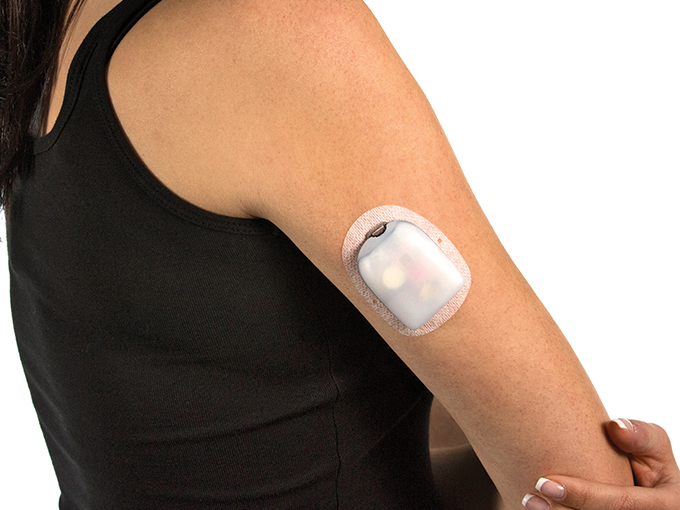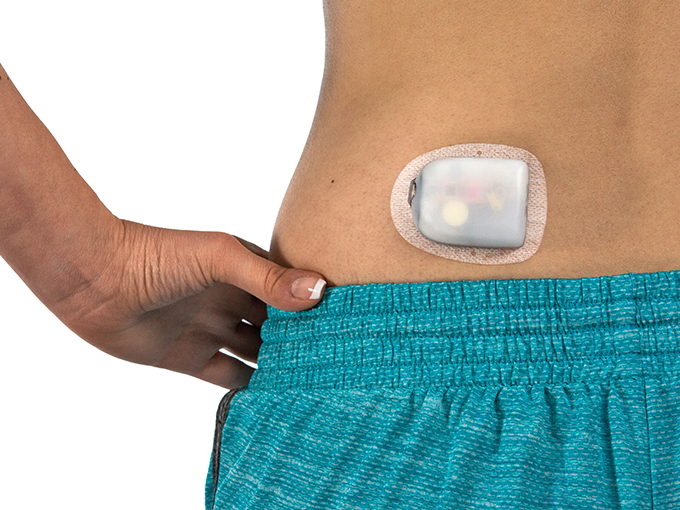First Few Days as a Podder®
Omnipod New User: First Steps
Congratulations!
You are now among thousands of Podders® around the world! It can be overwhelming to change how you manage your diabetes, but don’t worry, our team is here to help you!
Getting used to wearing a device can take some time and adjustment. Don’t be nervous.
- If you accidentally bump or knock your Pod off, simply follow your Pod change instructions and start a new one.
- If your Pod site is uncomfortable, remember there are several other places you can wear your next Pod.
- Choose your clothes with your Pod in mind until you are comfortable. Be conscious of where your Pod is located so you do not accidentally displace the Pod. Do not place your Pod directly under your waist band or belt.
- Your Pod is waterproof* so you are free to shower or bathe with it on. The Pod’s adhesive can keep the Pod securely in place for up to 3 days**. But everyone’s skin is different. If you are having trouble with your Pod sticking, there are some ways to help your Pod stick better. A common tip is limiting exposure to moisturisers or oil-based soaps, these can sometimes prevent the adhesive from sticking well.
Where to wear your Pod?


Vertically on your arm – Pod window can be positioned up or down


Vertically on your leg


Horizontally on your abdomen – at least 1 inch (2.5cm) away from your waistband and at least 2 inches (5cm) away from your navel for comfort


Horizontally on your lower back or upper buttocks
Your blood glucose (BG) values may vary. Don’t panic.
Initial settings are usually conservative as you start Pod therapy. If you experience a single BG above or below target during your first days, treat your BG accordingly. A single day or BG value is not enough to make immediate changes. Adjustments to your settings will be based on patterns. If you see extreme high or low BG values during the first few days you should contact your healthcare provider.
During your first few days, try to focus on:
Checking your BG often.
Set a BG reminder on your Omnipod® System or Omnipod DASH® Personal Diabetes Manager (PDM) 2 hours after you bolus. BG readings before and after meals will help you and your healthcare provider identify trends in your BG.
Counting your carbs accurately.
If possible avoid eating out at restaurants for the first few days. Eating at home allows you to read food labels, measure portions, and achieve a more accurate carbohydrate count.
Try to stay as close to your normal activity as possible.
Since activity can impact your BG levels, discuss with your healthcare provider if you should skip your planned exercise during your first day(s) on the Pod. If you do end up exercising, be sure to check your BG before, during, and after your activity. Remember to carry items like glucose tabs, or juice to treat a low BG should one occur.
Doing your first Pod change on your own
- Schedule a generous amount of time to perform the first 1-2 Pod changes so you don’t have to rush. Before you know it, you’ll be a pro and a Pod change should be quick and easy.
- Before filling a Pod, ensure that no other Pods are being activated within 1.5m (5ft) of your Omnipod® System or Omnipod DASH® PDM.
- Remember site rotation can help with insulin absorption. Try a different area that you and your healthcare provider have identified as ideal.
- If you are using the Omnipod DASH® PDM, use the Pod site map to help you track your current and recent Pod site locations. This feature can be turned on in settings.
Learning about your Omnipod® System or Omnipod DASH™ PDM
- Like your mobile phone or BG meter, you will want your Omnipod® System or Omnipod DASH® PDM available at all times. However, your Pod will deliver your basal rates as scheduled even when it is not in range of the Omnipod® System or Omnipod DASH® PDM. You will need to have your Omnipod® System or Omnipod DASH® PDM within 1.5 m (5ft.) of your Pod when you want to bolus, check your BG, or make any changes.
- Dedicate a spot for your Omnipod® System or Omnipod DASH® PDM in your home so you will always know where to find it and you won’t leave home without it!
- Your Omnipod® System or Omnipod DASH® PDM does not like to be too hot or too cold so don’t leave it in the elements (i.e. the car).
- Get into a habit of checking the battery level. Depending on the PDM you have, you may need to replace the batteries, or recharge the PDM.
Other things to do during the first few days
- Remember to carry backup insulin supplies and Pods when you are away from home.
- Keep an updated copy of your Omnipod® System or Omnipod DASH® PDM settings for future reference.
- Take notes of any unusual events that may occur (illness, strenuous activity, stress etc.).
- Keep in touch with your healthcare team as instructed.
- Our Customer Care is available 24/7. Make sure to save the phone number into your mobile phone for easy access.
Refer to the Omnipod® Products Guides for complete safety information including indications, contraindications, warnings, cautions and instructions.
Continue reading:
From wellness tips and science news, to stories and support, our blog is where Omnipod® users share inspiration and information about how to simplify life with diabetes. Explore a variety of topics from a community unlike any other.
Related Articles
References and Disclaimers
* The Pod has a waterproof rating of IP28 for up to 7.6 metres for 60 minutes. The Omnipod® System or Omnipod DASH® PDM is not waterproof.
** Up to 72 hours of continuous insulin delivery.
This blog provides general information and discussions about health and related subjects. The information and other content provided in this blog, or in any linked materials, are not intended and should not be construed as medical advice, nor is the information a substitute for professional medical expertise or treatment. If you or any other person has a medical concern, you should consult with your health care provider or seek other professional medical treatment. Never disregard professional medical advice or delay in seeking it because of something that have read on this blog or in any linked materials. If you think you may have a medical emergency, call your doctor or emergency services immediately. The opinions and views expressed on this blog and website have no relation to those of any academic, hospital, health practice or other institution.
These modules are not a replacement for medical advice or training. Please always speak to a qualified healthcare professional about your options.



